TPO -> GB Railway Sub Offices
GB Railway Sub Offices (RSO)
By Tony Goodbody
Introduction
Before 1855 the Post Office accounting system dictated that head post offices (i.e. main post offices in post towns) exchanged mail with other head offices or with (railway) travelling post offices (TPOs). In that year the accounting system was changed so that a number of the smaller head offices were down graded to sub offices. These sub offices were able to exchange mail directly with TPOs without going through their own head offices and were known as railway sub offices (RSOs).
The first post office to become so designated was Braco in Perthshire which became an RSO on March 1st 1856. At first the term was applied only to offices directly on the route of a TPO. Latterly however the term was extended to include sub offices remote from a railhead which exchanged the bulk of their mail directly with a TPO. Oft quoted examples of RSOs not on a railway line are Stromness (Orkneys) and Sark (Channel Islands). Eventually the Post Office realised the absurdity of the name railway sub office for these far flung outposts and the title of RSO was discontinued as from June 30th 1905.
Postmarks
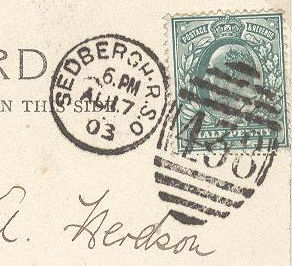 Before about 1900 very few RSOs used postmarks incorporating the initials R.S.O. Between 1901 and 1905 however, a considerable
number of RSOs (but by no means all) were issued with cancellers including the initials R.S.O.
Before about 1900 very few RSOs used postmarks incorporating the initials R.S.O. Between 1901 and 1905 however, a considerable
number of RSOs (but by no means all) were issued with cancellers including the initials R.S.O.
One of the first RSOs to receive an RSO canceller was Sedbergh the duplex for which is recorded in the 1870s and again (with slight differences) in 1902 and 1903 (figure 1).
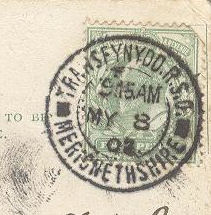 Most RSO post marks were single or double ring postmarks as seen in figure 2 for Trawsfynydd in Wales.
The comic post card below illustrates the point that the letters R.S.O. were frequently included in addresses.
Most RSO post marks were single or double ring postmarks as seen in figure 2 for Trawsfynydd in Wales.
The comic post card below illustrates the point that the letters R.S.O. were frequently included in addresses.
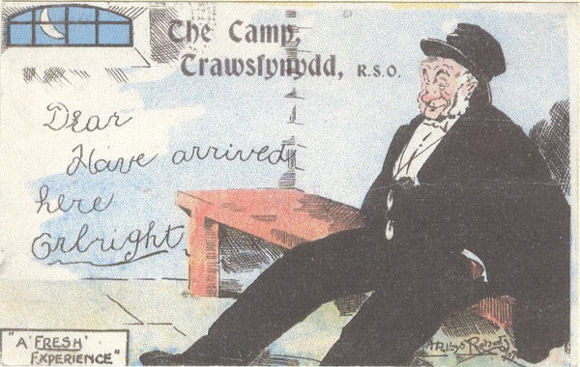
Skeleton Postmarks
Skeleton postmarks were used when the normal canceller was for some reason unavailable. Such postmarks were normally only in use for a period of weeks. An example of the TINTAGEL / RSO CORNWALL skeleton postmark, in use for less than two weeks, is shown in figure 3.
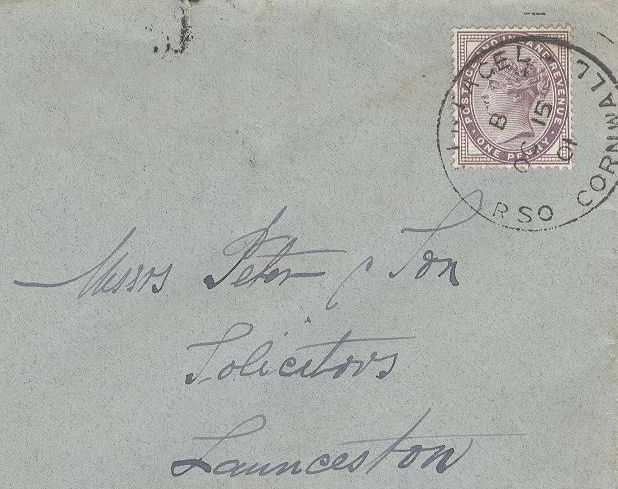
Although the name RSO was discontinued in 1905, a number of former RSOs continued to use the canceller without mutilation. An extreme example of this for St. Keverne in Cornwall is shown in figure 4. The postmark was still in use in 1937, some 32 years after it had ceased to be an RSO.
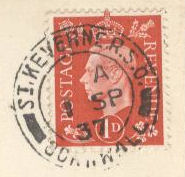
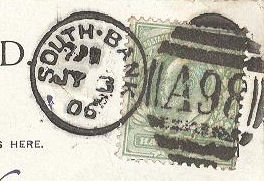
It was mentioned above that many RSOs never received an RSO postmark, but used cancellers which included no hint that they were in fact RSOs. Figure 5 shows one such used at South Bank, Yorkshire. Although this example is dated 1906 it was in use when South Bank was an RSO.
Sub Offices of RSOs

Figure 6 shows part of a postcard posted at Bainbridge in Yorkshire. Bainbridge was a sub office of Askrigg RSO. Its postmark was inscribed BAINBRIDGE ASKRIGG R.S.O. / YORKS. The Bainbridge postmark has been struck well away from the stamp which was subsequently postmarked with the F14 numeral postmark of Askrigg. We conclude therefore that the F14 obliterator is itself an RSO postmark.
Other RSO marks
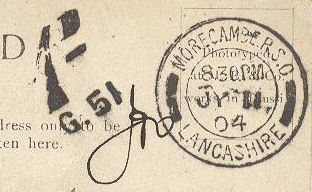 Figure 7 shows part of an unstamped post card from Morecambe with the MORECAMBE R.S.O. / LANCASHIRE double ring postmark and
beside it the 1d to pay mark with the alphanumeric code G51 for Morecambe.
This to pay mark is also an RSO postmark.
Figure 7 shows part of an unstamped post card from Morecambe with the MORECAMBE R.S.O. / LANCASHIRE double ring postmark and
beside it the 1d to pay mark with the alphanumeric code G51 for Morecambe.
This to pay mark is also an RSO postmark.
Bibliography
Between 1967 and 1974 the TPO and Seapost Society published a list of some 2200 RSOs arranged by county. Overlapping with this was a series of articles by the late JR Henderson published in the philatelic journal "Stamp Collecting." These articles collated data on periods of use of RSO postmarks gleaned from a large number of sources.
In 1983 the Railway Philatelic Group published a monograph by AM Goodbody. This monograph included information from the above two sources and extended in many cases the recorded periods of use. It is this information which is at once the most useful and the first to become out of date.
Finally it should be noted that Grahame Blackman, President of the Railway Philatelic Group, having spent many years researching the subject of RSOs, is preparing a much more detailed publication on the RSOs of Great Britain and Ireland.

